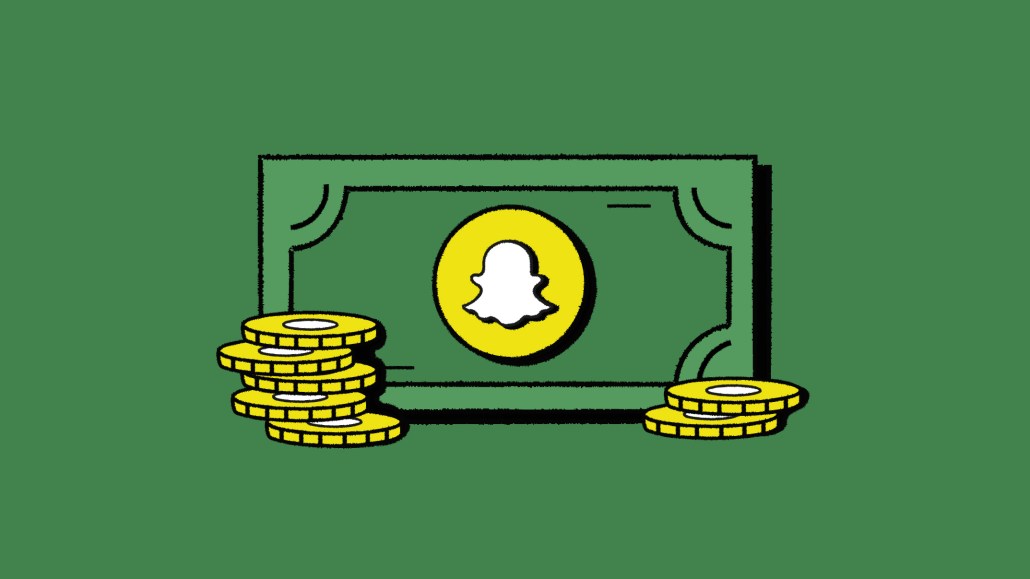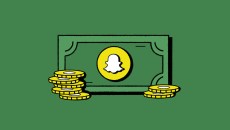Why content on Snapchat has become less profitable for some news publishers

Last year, after a particularly lucrative three-month period of publishing text-based content on its two Snapchat’s Discover channels, a digital media company was ready to reinvest in the platform and create more channels.
Revenue increased by 88% year-over-year during the summer months of 2022 for those two “legacy” channels (channels that were at least four years old) and an exec from the company, who spoke on the condition of anonymity, said that their team was ready to pour more fuel on the fire — until they said Snapchat pivoted away from prioritizing this type of publisher programming. The exec did not say exact revenue figures for the channels’ worth.
The situation underscores the ongoing publisher-platform dynamic where platforms rely on publishers to create content, incentivizing them to do so in many cases. Getting used to additional revenue through these partnerships, publishers run the risk of eventually get screwed over by algorithm changes or changing internal prioritizations.
Snapchat ultimately denied the digital media company’s request to launch new channels focused on text-based slides due to a shift in prioritizing video programming and, in effect, was no longer accepting pitches for additional Discover channels from publishers.
Following this guidance, the team pivoted and launched two new shows, which Snap helped to launch, including selecting content for the shows, the exec claimed.
“The shows were being viewed by no one. We were creating all this custom content — it’s very video-heavy, it required a lot of editing and reformatting,” the media exec said. “We were very unhappy with the performance of those,” and ultimately the team decided to push pause. The exec did not say specifically how the shows performed.
A Snap spokesperson told Digiday that the platform does not prioritize one format over another, but wants to offer users a range of multiple content formats. Every Discover show and pitch is vetted by Snapchat’s content team to make sure they’re compliant with guidelines and not all pitches will be approved, the spokesperson added. Publishers are instead encouraged to test out different content strategies and experiment with posting across the Discover and Spotlight tabs in the app, to see which formats ultimately meet their audience and revenue goals, the spokesperson added.
But during the period of August 2022 to January 2023, following the launch of the shows, monthly revenue from Snapchat decreased by an average of about 60% for the media company, according to the exec.
The executive attributed their company’s decrease in revenue to algorithm issues that the platform is facing, which they said began after Snap’s layoffs at the end of August last year. The exec called its company’s Snapchat strategy as “in a holding phase.”
A Snap spokesperson said that as there is a continuous rollout of updates and improvements to its algorithm, creators are not encouraged to stop publishing until the algorithm is fixed, calling it an ever-evolving product.
Despite the revenue decrease, “the platform is still profitable for us,” according to the media exec. “It’s still self-sufficient in terms of it more than covering the resources it takes to operate on the platform. And we kind of see it as its own business within our company and its own additional revenue stream.”
This publisher isn’t alone in their rollercoaster experience with Snapchat.
Ad revenue drops, algorithm issues and executive departures
Another news publisher who spoke only on the condition of anonymity, said that their company’s revenue is also “substantially down” year over year — a downward trend that started in the middle of 2022. The company publishes shows and content for Discover and Spotlight, but the revenue drop was primarily attributed to revenue generated through Discover.
Despite this, an exec from the company said that the team has “not changed our strategy or altered how we approach the platform,” and hopes the issue will be remedied by the platform soon.
Meanwhile, Snapchat wants to increase the number of content monetization opportunities this year as well as streamline the experience for publishers who use the app, according to the Snap spokesperson, who added that there will be a significant investment into simplifying the tools used for creating posts in the app. They declined to share a set timeline for when some of these updates will be available.
Not immune to the cost cutting trends that hit tech companies over the last several months, Snap has been undergoing a series of changes, starting at the end of August with a 20% reduction of staff — or 1,300 people. At the same time, Snap’s chief business officer, Jeremi Gorman, and vp of ad sales, Peter Naylor, left the platform to join Netflix. Then its Q4 earnings call revealed the company was forecasting as much as a 10% decrease in advertising revenue over the first three months of 2023. And most recently, the platform’s top content and partnerships executive, Ben Schwerin, announced he’s leaving the company after more than eight years, according to Variety.
Responses to Snap’s latest earnings and these leadership changes are mixed: Some advertisers, who are already being judicious with their budgets right now, are not seeing Snapchat as a top priority in their social media and influencer buys. Others are less concerned.
“We are seeing stable demand from brands for Snapchat advertising. While growth in new social platforms has taken a bigger slice of the pie the last year, Snap is still a critical place for brands to reach consumers, with strong optimization tech and ability to drive business outcomes at the top and bottom of the funnel,” said James Donner, partner and evp of investment at Decoded Advertising, who works with clients in the healthcare and wellness industries.
Not all publishers are impacted equally
Amid these challenges, a number of “content partners” — defined as news outlets, media companies, creators and sports teams, per the platform’s website — are still seeing success on Snap. Still, Snap claimed to investors that 17 of its top content partners reached more than 50 million viewers across the globe during Q4. This is down from 25 content partners achieving this benchmark in Q4 2021. The partners who saw this success were unnamed.
U.K.-based LGBTQ+ publisher PinkNews is one such publisher that has seen success on Snap. CEO Benjamin Cohen said that across the 30 shows his team publishes, there are just under 10 million total subscribers, making Snapchat PinkNews’ largest platform from both a revenue and audience perspective.
“I think if we were launching on Snapchat Discover today, it would be a lot harder than it was when we launched in 2018 [when] there were a handful of publishers and it was, frankly, easier because it was a less crowded environment,” said Cohen. During the year that his company launched on Snapchat, there were more than 90 Discover publishers and show makers publishing alongside PinkNews.
PinkNews is still creating new shows on the platform as well, both in the languages it currently publishes in, English and French, with plans to launch in other languages.
So while “it’s become a more challenging platform, I think it’s one that rewards those who have been loyal to it, because we have nearly five years of data on all of the different things that we’ve done,” Cohen said.
Too big a barrier to entry
For other publishers, the resources needed to make content for Snapchat were too numerous. It led one mid-sized digital media company, in part, to walk away from the platform altogether in early 2022, said a third media executive who spoke on the condition of anonymity.
Unlike other social platforms that make it easier to republish existing content — such as taking a TikTok and posting it on Instagram Reels — Snapchat required a different skill set that wasn’t currently in-house, so publishers had to build these teams from scratch or give team members an additional workload. Snap has been trying to improve this hurdle for creators.
“You’re kind of always starting in the red,” the third media exec said.
While this exec said audience and revenue grew in 2021, the team saw a downward shift in revenue in 2022. And standing out as more publishers joined the “cluttered environment” made it difficult “to the extent that you would need to in order to deliver enough audience to make money,” the third executive said.
More control over the money
Snapchat also became less of a priority for the third publisher because unlike other social media platforms, the publisher’s sales team wasn’t able to directly sell their content at the time, making them completely beholden to Snap and the revenue share model on Discover.
Snap changed this last year and the platform does allow publisher partners the ability to sell ads directly in their content as well as against their audiences through the platform’s Business Manager.
Cohen said that while most of the revenue earned from Snapchat right now is through revenue shares on programmatic ads, the platform is starting to test show sponsorships, which would be direct sold or co-sold by the publisher and Snap. And through this, he hopes to tip back toward direct revenue being the higher proportion of revenue, like it was when publishers were able to sell takeovers of their stories in years past.
Despite that capability, “most of the revenue that we received from Snap is in the [revenue] share program [from Snap] themselves monetizing against our channels,” according to the first publisher.
More in Media

Podcast companies turn to live events to capture growing advertiser spend
The surge in the number of live podcast events in 2025 reflects a broader shift: advertisers are betting bigger on podcasts — not just as an audio channel but as a full-fledged creator economy play.

Media Briefing: ‘Cloudflare is locking the door’: Publishers celebrate victory against AI bot crawlers
After years of miserably watching their content get ransacked for free by millions of unidentified AI bot crawlers, publishers were finally thrown a viable lifeline.

How Vogue could navigate potential industry headwinds as Anna Wintour — who agency execs say made ad dollars flow — brings on new edit lead
Anna Wintour’s successor at Vogue will have to overcome the myriad of challenges facing fashion media and the digital publishing ecosystem.









